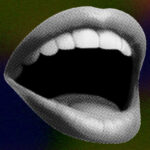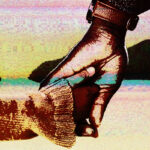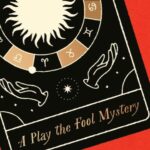In Praise of the Unshelveable: 10 Weird Finds From the Used Books Boxes
Augustus Rose on the "Marginalia" That Inspired His Novel
The summer after graduating high school I got a job at San Francisco’s Green Apple Books, one of those great old massive bookstores with more volumes than there are shelves to display them. It was a labyrinth of books, dusty and cramped with teetering piles taking up every inch of available floor space. To walk into such a bookstore is to open yourself up to the opportunity of discovery, of finding buried within those piles books you never knew you were looking for. Even as an employee, I felt that sense of discovery daily.
One of my jobs as a worker bee was to haul boxes of freshly bought used books up to the second floor to a tiny, coffin-sized alcove we called “the cave,” to sort them into towering stacks organized by subject for more efficient shelving. Every fifth box or so would offer up some volume I’d never known existed but that I had to read. Immediately. Right there in the cave. I was a lousy employee, spending hours reading when I was being paid to sort and shelve, but that’s what it is to be curious, covetous, and to work in a bookstore like Green Apple.
I was drawn to oddball, fringy titles on subjects such as cults, weird films, urban exploration, speculative science, CIA mind control, modern alchemy, conspiracies, subcultures, subversive or underground art movements. They were the kinds of books that often had a hard time finding a section, and so I created and lovingly curated a section of my own, which I called “Marginalia.” The corollary of this discovery and curation, and what made being a bookseller really matter to me, was that I got to hand-deliver strange and unexpected titles to customers who I thought would enjoy them as much as I.
Much later I realized that this is, in many ways, how I approach writing—as an opportunity to give readers that sense of discovering something they didn’t know they were looking for while indulging my own niche obsessions. Somehow I managed to shoe-horn into the novel secret societies, conspiracies, fringe science, alchemy, urban exploration, lock picking, burglary, the Darknet, string theory, art history, and at the center of it all: the legacy of the early 20th-century artist Marcel Duchamp. Much of this culled from books I collected during my years as a bookseller.
Recently I went through my bookshelves and culled a small, random selection of books taken home over the years, now part of my own Marginalia section, all of which I returned to when writing my novel The Readymade Thief. They include:

René Daumal, Pataphysical Essays
(Wakefield Press 2012)
A recently compiled and translated collection of essays on pataphysics, “the science of imaginary solutions,” invented by late 19th-century iconoclast and (Duchamp contemporary) Alfred Jarry. Daumal (reluctant surrealist and author of the wonderful fantastical novel Mount Analogue) takes Jarry’s straight-faced absurdity and runs with it. It is this stance—projecting the absurd with absolute seriousness—more than anything, which is at the heart of The Readymade Thief.

Ninjalicious, Access All Areas: a User’s Guide to the Art of Urban Exploration
(Coach House Press 2005)
Written pseudonymously by the man behind “Infiltration,” “the zine about going places you’re not supposed to.” Lee Cuddy, the young heroine of The Readymade Thief, is forced by necessity to go underground and hide out in kinds of abandoned areas mapped out in this book.
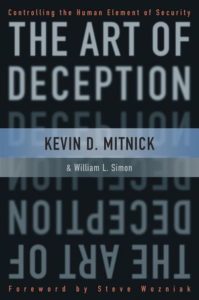
Kevin D, Mitnick, The Art of Deception
(Wiley 2002)
A book on social engineering, which is basically the social component of hacking, written by a man who was once the FBI’s most-wanted hacker. Lee turns into a pretty good social engineer out of necessity and this book proved an invaluable guide.

John Moffitt, Alchemist of the Avant-Garde: The Case of Marcel Duchamp
(Suny Series in Western Esoteric Traditions 2009)
One of the things I love most about Duchamp is that his work invites such crazy variation in critiques and interpretations, some of them borderline fantastical. Here Moffitt makes the case that Duchamp was in fact heavily influenced by alchemy and other occult traditions.

Mindfuckers: A Sourcebook on the Rise of Acid Fascism in America, edited by David Felton
(Straight Arrow Publishers 1982)
This book looks at the inherent fascism of cults, especially those that were burgeoning in the late 60s-70s. While millions of kids were experimenting with LSD as a tool of liberation, some of these cults’ leaders saw the drug as a potential tool for mind control. There’s a secret society in The Readymade Thief called Société Anonyme who manufacture a psychedelic drug called Thrumm that turns some users into malleable slaves, and Mindfuckers was part of the inspiration behind that.

M. Golobic, Neue Slowenische Kunst
(Amok Books 1992)
A book about NSK, the Slovenian political art collective behind the band Laibach, which drapes itself in the imagery of totalitarian kitsch. I think of Société Anonyme as being kind of like NSK but without the sense of humor. Société Anonyme is obsessed with Marcel Duchamp and his era, dressing in early 20th-century costume and staging reenactments of famous art exhibitions. Both groups are fixated on uniforms and imagery of a certain era, both appreciate a good bit of theater, but one sees the joke behind it, the other does not.

Michael Talbot, The Holographic Universe
(Harper Perennial 1991)
Too fringe to be shelved in the science section, too lucid to be in metaphysics, Talbot connects unexplained paranormal phenomena with quantum physics to entertain a theory that the universe is a giant hologram in which each tiny part contains within it the entirety of the whole. The ideas behind this book fed into the basis of some of the Société Anonyme’s theories of what might be encoded in Duchamp’s final, hidden work.

Louis Pauwels and Jacques Bergier, The Morning of the Magicians: Secret Societies, Conspiracies, and Vanished Civilizations
(Destiny Books 1960, 2009)
Coauthored by a journalist and a nuclear physicist and first published in France in 1960, this is one of the first books to connect the science of the modern world with the mysticism of the ancient, including links between quantum physics and alchemy, nazis and the occult, and a worldwide conspiracy of secret societies that dates back to the Rosicrucians.

An endless adventure… an endless passion… an endless banquet. A Situationist Scrapbook, ed. by Iwona Blazwick
(Verso 1989)
A curation of various texts, documents, photos, and psychogeographical maps of the Situationist International, a mid-century group of anti-artists and cultural revolutionaries. The book is jacketed in sandpaper and doesn’t play well with others.
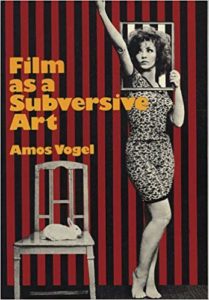
Amos Vogel, Film as a Subversive Art
(Random House 1974)
My favorite film book of all time. Vogel’s stills are so perfectly chosen they made me seek out and watch films I’d never heard of before, or rewatch films I’d seen but with an eye to what Vogel’s insights brought to them. The captions to the films alone make the book worth reading. I went back to this book several times for Vogel’s take on early surrealist films.
Of course none of this, in and of itself, makes a novel; in the end it’s all just backdrop, in this case to the journey of an 18-year-old girl at the center of a conspiracy that begins with a cryptic note she finds in an abandoned aquarium. The note, impossibly, has been left for her to find, and that’s how I often felt as a young bookseller, holed up in the cave at Green Apple, picking through the boxes of books waiting to be inventoried: that certain books had been there waiting for me to find them.
I didn’t know it when I began but I think I wanted to write a novel that instills in readers that same sense of discovery I used to feel every time I’d walk into that big old used bookstore where I worked, that feeling that I was bound to find something weird and delightful there that I didn’t even know I was looking for.
















